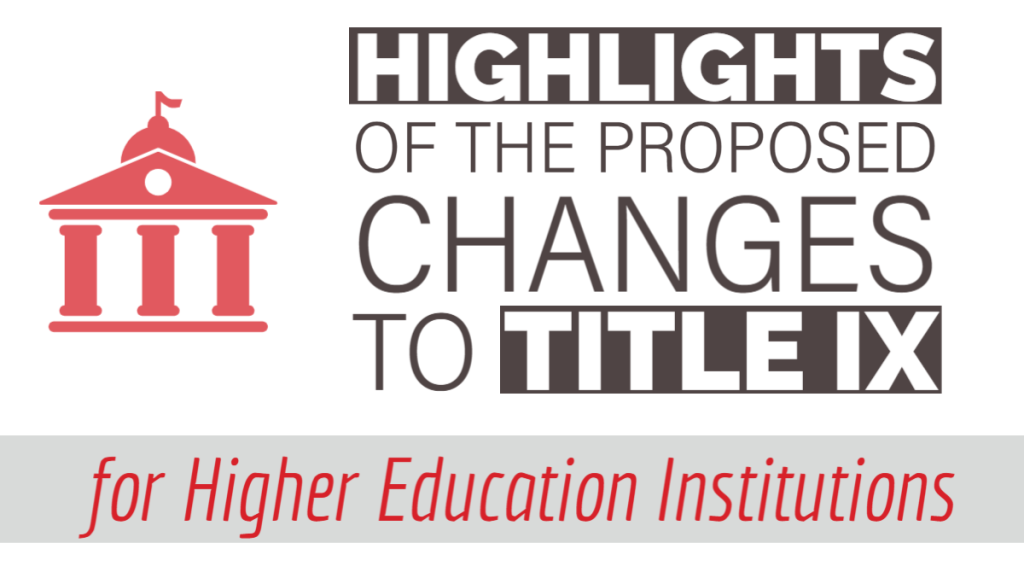
Posted June 23rd, 2022 in Top Stories, Legal Insights with Tags Labor and Employment, Higher Education
Department of Education Releases Proposed Title IX Revisions
The U.S. Department of Education (DOE) released its long-awaited proposed regulatory changes to Title IX of the Education Amendments of 1972 (Title IX). Title IX protects students, faculty, and staff from sex-based discrimination in education programs and activities by institutions that receive federal financial assistance (recipients). The Title IX regulations were last amended in May 2020 by the Trump administration and faced an immediate—and largely unsuccessful—legal challenge. The Biden administration’s proposed regulations are a major departure from the current regulations. Among the changes, they expand the scope of covered conduct, eliminate many of the detailed Trump-era requirements for grievance procedures (including the controversial hearing and cross-examination requirements), make explicit protections for LGBTQI+ students, and add protections for pregnant students and employees.
In the short-term, educational institutions are not required to change their current Title IX policies or processes. The proposed guidelines must first undergo a 60-day period of public comment before final regulations are issued. Additional changes to the proposed regulations may occur as a result of the public comments.
The DOE also announced it would engage in separate rulemaking to address Title IX’s application to athletics. This rulemaking would address whether and how the DOE should amend the Title IX regulations to address transgender students’ eligibility to participate on a particular male or female athletics team.
Highlights of the proposed regulations and a comparison to the current regulations are summarized below:
[supsystic-tables id=2]
